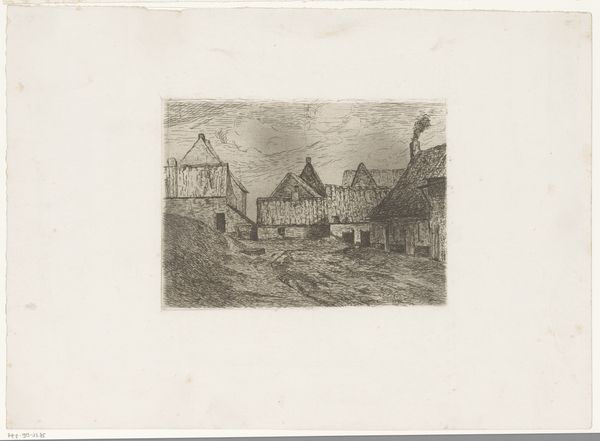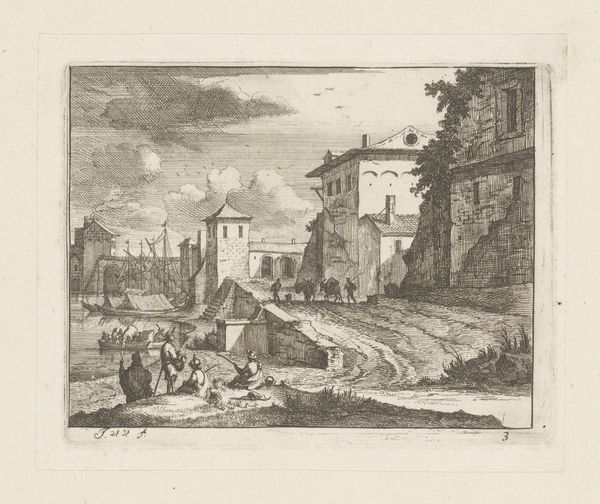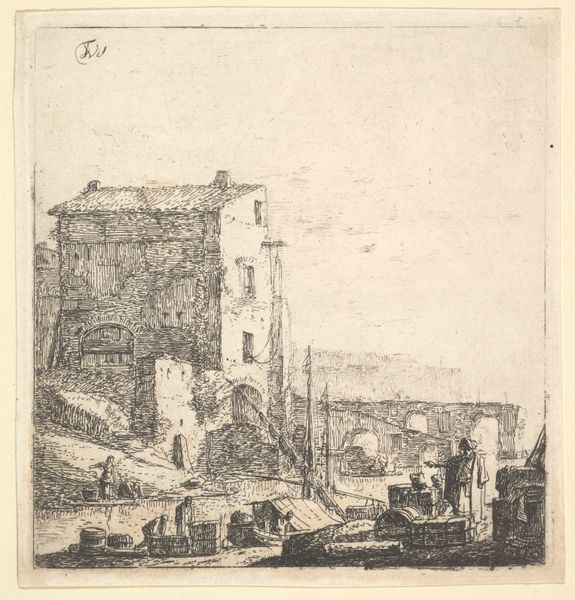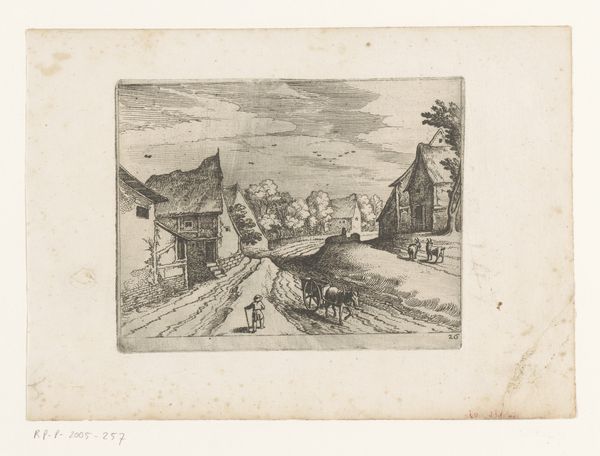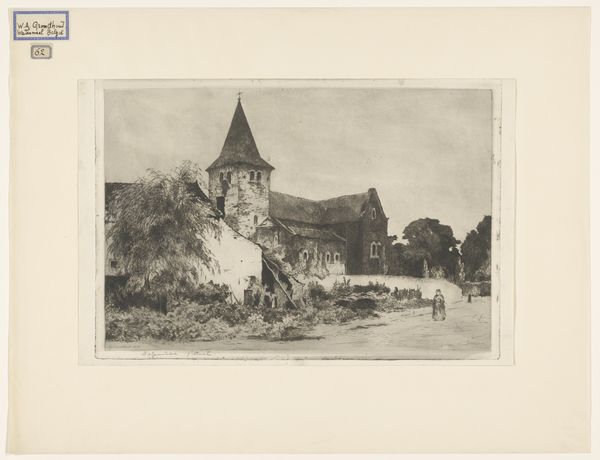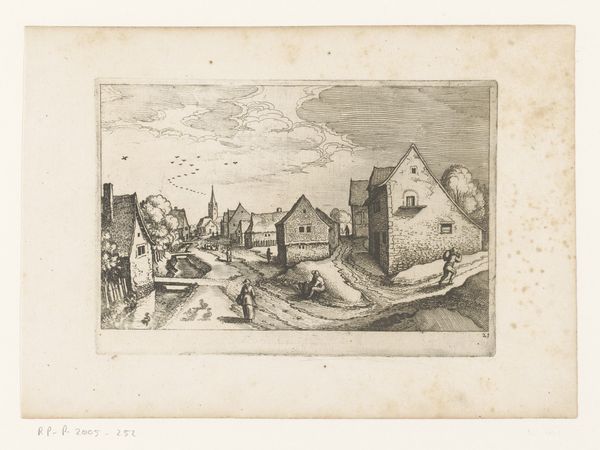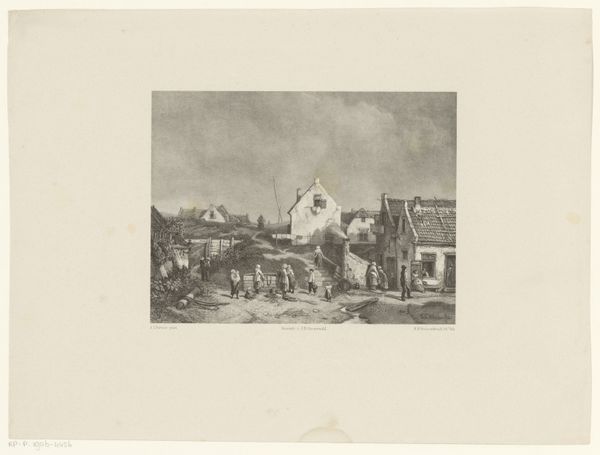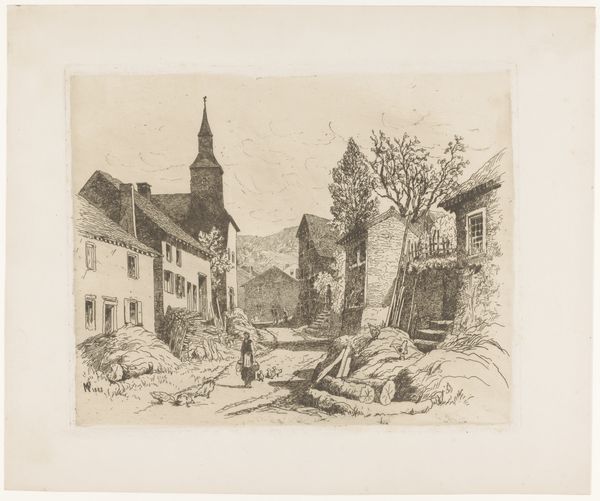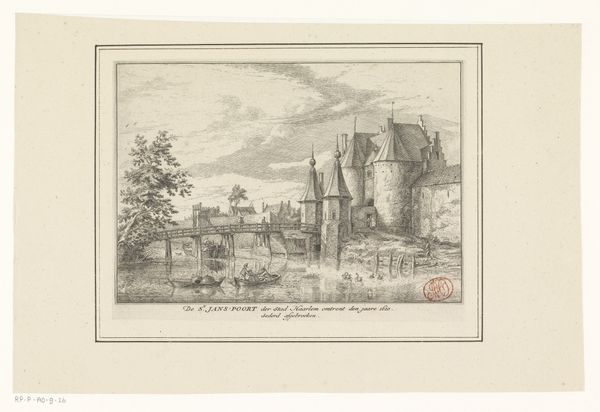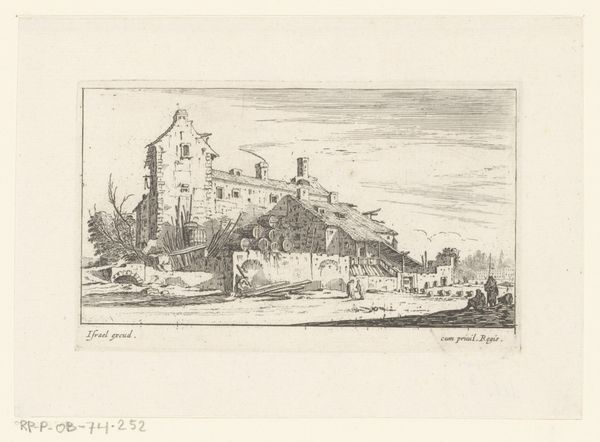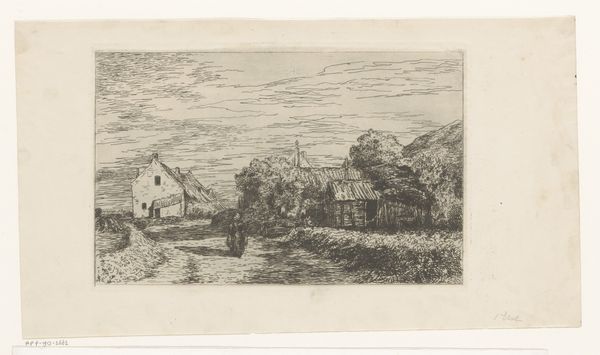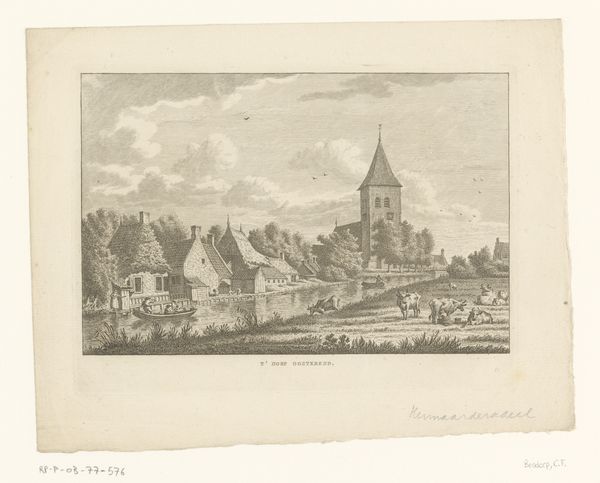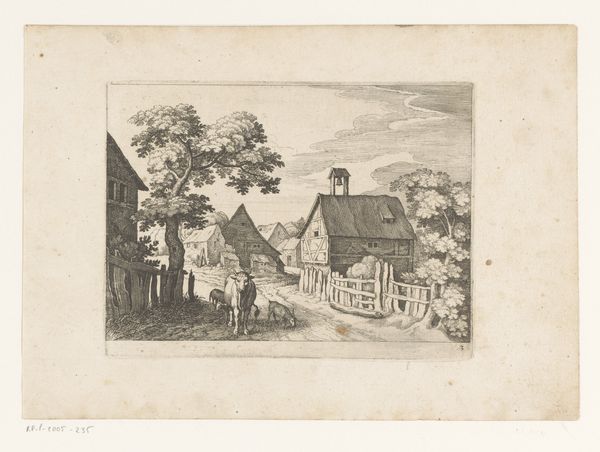
drawing, print, etching
#
drawing
#
dutch-golden-age
# print
#
etching
#
landscape
#
genre-painting
#
realism
Dimensions: height 130 mm, width 188 mm
Copyright: Rijks Museum: Open Domain
Editor: So, this etching is titled "View of the Old Fish Market at the Steen in Antwerp" by Jean Théodore Joseph Linnig, dating to 1868. I’m really struck by how this busy market scene is nestled right up against these imposing medieval buildings. How would you interpret the juxtaposition between everyday life and historical power? Curator: That's a brilliant observation. It's fascinating to see Linnig capturing this intersection of the quotidian and the monumental. Consider the context of 19th-century Antwerp. The Steen, that imposing medieval fortress, was then being used as a prison. Juxtaposing it with a bustling marketplace is inherently political, isn't it? Linnig’s composition presents a dynamic contrast. Editor: Political in what sense? Curator: Well, how do you think representing a marketplace filled with vendors and customers *directly adjacent* to a symbol of state authority affects the perception of that authority? Think about the power structures that shaped the urban environment of Antwerp and consider that such a direct depiction – perhaps unintentional, perhaps not – highlights that dynamic for the viewer. Linnig encourages us to contemplate these juxtapositions. Does that dynamic read differently to you now? Editor: It does, definitely. The market is almost cheekily right up against the seat of power. Almost like saying, ‘we’re still here, going about our lives.' And the very public nature of art is also so present. Curator: Exactly! It's a commentary on the ongoing relationship between the citizens and the spaces that are meant to govern, and perhaps even contain, them. Linnig makes it clear whose Antwerpen this actually is. What does an artwork like this say about how societies negotiate their identities within urban contexts? Editor: That makes me think about how cities themselves are always these evolving stages. Thank you, that has offered a completely new view. Curator: Indeed! Analyzing art history means looking closely at all facets of the works: composition, technique, subject, cultural significance, political commentary, how such pieces serve to reinforce and potentially to challenge socio-economic systems. Looking closely provides deeper historical contexts to inform the present!
Comments
No comments
Be the first to comment and join the conversation on the ultimate creative platform.
